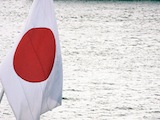The Credit Squeeze Hits Asia’s Trade Finance
Post Views 0The Asian Development Bank is preparing for a surge in demand for its trade financing, with a pull-back in lending by European banks risking a bigger credit squeeze for some Asian nations than seen in 2008.
”The trade-finance program is filling persistent market gaps, but it will become even more important,” said Steve Beck, who heads the Manila-based ADB’s unit that provides credit and guarantees for imports and exports, in an interview. ”With some major European banks retrenching from the trade-finance business, we see that the gaps are increasing,” he said, without naming any of the lenders.
Beck sees the growth in his $3 billion operation accelerating from a pace already in excess of 25 percent this year, with a credit crunch having the biggest impact on poorer emerging markets including Sri Lanka, Bangladesh and Vietnam. At state is adverting a 2008-style collapse in trade that impairs growth in the continent that led the world out of the global recession.
The European banks are rushing to raise their capital ratios as the euro-region’s debt crisis continues unabated. The lenders are likely to de-leverage by 1.5 trillion euros ($2 trillion) to 2.5 trillion euros, Morgan Stanley estimated in the last month. Among the non-core assets at risk is trading finance in Asia, where nations outside Japan exported $4.1 trillion last year.
”European banks that had exposure in Asia have had to repatriate some of the money from Asia, and that’s why you see volatility” in the region’s exchange rates, said Iwan Azis, who is the head of the ADB’s Office of Regional Integration.
Currencies from the Philippine peso to Indonesia rupiah and Indian rupee tumbled in the month of September, when European debt woes deteriorated as Greece teetered toward a potential disorderly default. During the week of September 19, Asian currencies tumbled the most since the region’s financial crisis in 1998.
Beck said that another sign of distress is a jump in the number of companies refusing to do business without trade finance, where banks insure that exporters will get paid for their products.
”There are a lot of people in the industry who are predicting that it’s going to be worse than 2008,” said Beck, referring to import-export financing.
”Demand for our product is already affected,” said Thomas Patrick, who is the director of finance at Duferco SA, which is based in Lugano, Switzerland and estimates that it’s the world’s largest steel trader. ”We have a healthy order book but it is at reduced levels.”
Patrick said that European banks with Asian operations are scaling back, causing the medium-sized companies that purchase Durferco products to find less readily available credit lines or payments guarantees.
”A lot of companies particularly in distribution and trading are holding low stocks levels–to make sure avoid having exposure if there is a major crisis,” he said. ”We all had a very difficult experience in 2008 and we don’t want it repeated.”
The Credit Squeeze Hits Asia's Trade Finance by Harrison Barnes



 November Posts Another Strong Job Report
November Posts Another Strong Job Report  2006-2015 Median Weekly Earnings of Full-Time Workers in the United States
2006-2015 Median Weekly Earnings of Full-Time Workers in the United States  Expected Changes in 2016 to the Workplace
Expected Changes in 2016 to the Workplace  Job Growth Expected in West Michigan Through 2015
Job Growth Expected in West Michigan Through 2015  Top Five Reasons Talented Employees Quit
Top Five Reasons Talented Employees Quit  Amazon May Have a Better Grasp on Workplace Culture
Amazon May Have a Better Grasp on Workplace Culture